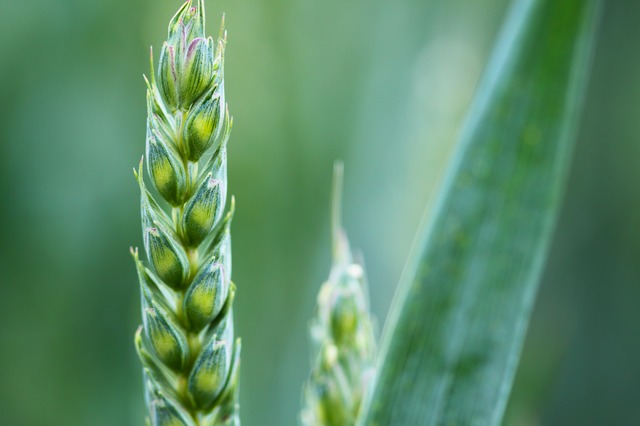Covestor model: Tortoise and the Hare
“The Tortoise and the Hare” (hereafter abbreviated to “Tortoise Model”) debuted on the Covestor platform in the most tumultuous month since the stock market collapse in 2008. So far, the Tortoise Model, and the Tortoise Stocks it holds, have shown strong resilience, unsurprisingly given the defensive nature of of their underlying business franchises. In August, the model managed a 0.35% gain, while the S&P 500 fell 5.68%.
However, the real tests have not yet arrived. Based on a dozen key macro data points that I am now watching closely, I consider the odds to be quite high that a double-dip recession is just around the corner. This is not a forecast. It is just a statistical interpretation of publicly available data. Historically it is unusual for the economy to avoid a recession with such data readings. This time could be different, but as casino owners know very well it seldom pays to consistently bet against unfavorable odds, even if one can get lucky sometimes. In response, I’ve decided to set aside 15%-20% cash as contingent “dry powder.”
In a hectic environment such as ours today, a strongly-held investment philosophy can help managers and investors stick to their original strategies, see through the day-to-day and tick-by-tick market activities, stay on course, maintain speed, and navigate toward the planned destination.
Please allow me to use this post to indulge in the discussion of the Tortoise Model’s investment philosophy, on a relatively abstract level. I promise to go into more details about the model’s stock holdings in my next update.
A lot can be learned from the namesake Aesop’s fable from 2,600 years ago.
Slow is Fast
At a speed of 0.2 mph, a land tortoise can cover nearly 1,800 miles, or a round trip from New York to Florida, if he keeps crawling for one year, i.e. 24 hours X 365 days = 8,760 hours.
His marine cousin, a sea turtle, can cover more than 100,000 miles at a speed of 12 mph, or circle the globe more than 26 times, if he keeps paddling for one year.
I believe the long-term winners in stock markets are rarely “hares” that can sprint and shine occasionally, but rather “tortoises” that can persistently grow their earnings power and build their business franchises year after year. They may not cover a lot of distance within a fiscal quarter, but one should never underestimate the power of persistence.
Longevity and the Law of Compound Interest
Tortoises laugh last and laugh best because they can live for a long time. The magic of compound interest is the eighth wonder of the world. A tortoise can expect to live on average 150 years, while a hare lives only 10 years. The 140-year difference can compensate for a lot of genetic deficiencies.
Peter Minuit bought the island of Manhattan from local Indians 385 years ago for then a small sum of $24. The native Indians were not swindled, and neither was Minuit exceptionally smart.
Twenty-four dollars, if invested at an annual compound interest rate of 10%, would have amounted to more than $200,000 trillion (or $200 quadrillion!) in 385 years. The Manhattan Island is certainly not worth that much today. In fact, U.S. GDP in 2010 was less than $15 trillion and world GDP less than $63 trillion. The Lenape tribe in fact got the long end of the stick, but unfortunately didn’t invest their proceeds wisely.
Longevity is a tremendous advantage for investors and businesses. Galápagos tortoises are known to be able to survive 18 months without food and water, enough to survive every one of the eleven economic recessions in the U.S. after World War II.
Have you ever wondered why one of the richest people on this planet is more than 80 years old and why he considers health as one of his most important assets? For Warren Buffett, “Life is like a snowball… The important thing is finding wet snow and a really long hill.”
Tortoises feed on almost anything. In contrast, hares can get sick simply because of too much moisture on the grass they eat. There is a good reason why Buffett “[tries] to buy stock in businesses that are so wonderful that an idiot can run them… Because sooner or later, one will.” Sooner or later one of your neighborhood kids is going to feed your pet bunny with freshly washed veggies, I can assure you. (Buffett quotations: The Snowball: Warren Buffett and the Business of Life by Alice Schoroeder, 2008)
Dull is Safe
Glamorous businesses dig their own graves. They always attract competition. Competition is a never-ending process that testifies for the efficiency of our capitalist system, as much as Darwinism in the animal kingdom. A hare can expect to live for 10 years, but very often they end up as delicious meals in a predator’s stomach or on a person’s dinner table much earlier.
Hares are fast and nimble runners (brown hares can achieve a top speed of nearly 50 mph). Unfortunately, they are fast simply because they constantly have to run away from predators. They are living in what we investors would call “fast-changing industries,” which Warren Buffett characteristically avoids.
Hares can’t even dig burrows as their cousins, rabbits, do. They are exposed, constantly react to predators, and run around aimlessly, sometimes drop dead because of heart failures, or snap their necks on a tree trunk because they don’t have good frontal vision.
In contrast, the clumsy tortoises don’t have to run. Like hedgehogs, they are shielded from predators by the proverbial “economic moats” (to paraphrase Warren Buffett) carried on their back. Tortoises and their “economic moats” do adapt. Contrary to public perception, tortoises’ hard shells grow with their bodies. Ever wondered how Galápagos tortoises can grow to to 6 feet in length?
The agile hares can be trained to do many fancy, yet useless, tricks, such as jumping up to 10 feet in one hop. In contrast, we rarely see any circuses employing tortoises. Tortoises stay within their circle of competence, knowing very well what they can and can not achieve. In Warren Buffett’s own words: “I don’t look to jump over 7-foot bars; I look around for 1-foot bars that I can step over.” (Ibid.)
Tortoise Stocks
The Tortoise Model holds Tortoise Stocks. So what is a “Tortoise Stock”?
A Tortoise Stock is the common equity of a business franchise that grows efficiently and persistently. It generates more capital than it consumes, and returns excess cash to its shareholders. It survives hard times, emerges stronger, and lives a long and productive life for its shareholders. It grows year after year at a decent but not break-neck speed, hence it’s less likely to break its neck on a tree trunk like a hare sometimes does. Its profit margin is steady and decent but not spectacular, hence less likely to attract competition. Most important, it can sometimes be bought at a fair, if not bargain price.
Businesses are not created equal. Genetics determine that a tortoise has a longer life expectancy than a hare. Some businesses just succeed more easily than others. In Buffett’s own words: “Good jockeys will do well on good horses but not on broken-down nags.” (Ibid.) I won’t waste my money and time on the search for the elusive, longest-living hare on earth, with Salesforce.com written on its forehead. Higher expectations so often lead to bigger disappointments.
Street analysts pay little attention to the dull tortoises and have low expectations. A tortoise is not going to become a prince overnight upon a kiss. Solid cash flows, however, do accumulate over time, and hard, cold, cash never lies. Before you know it, a tortoise has quietly circled the globe and back with a bag of “excess cash,” without billing you for the expenses of a private jet. The tortoise is a value-oriented partner of value-oriented shareholders.
Pay more attention to the tortoises. They have just walked past you while you were taking a nap.
Talk to you again soon.




